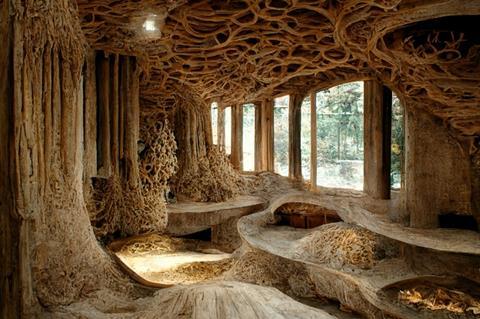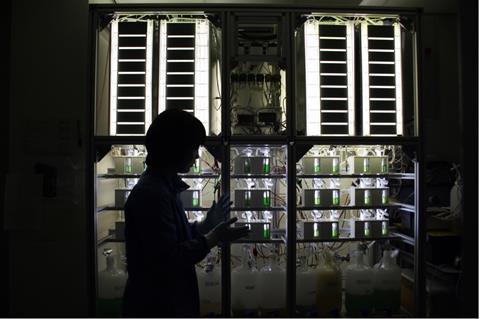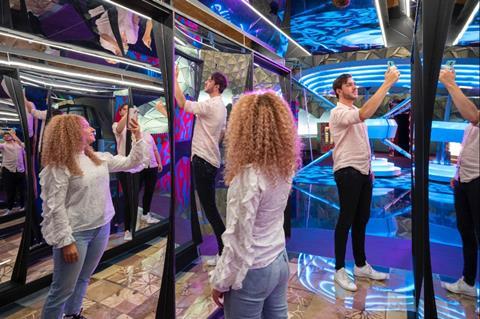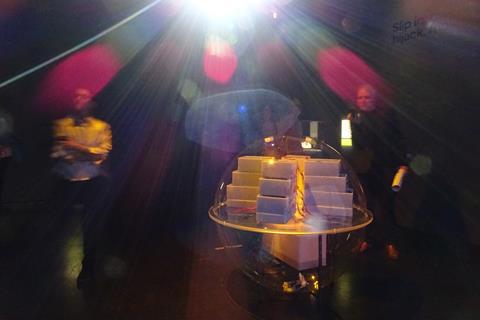A new review examining microbes and architecture reveals how buildings of the future will be unrecognisable by modern standards as they perform functions such as bioremediation that do not exist today.
The article gives an overview of an emerging field in next-generation sustainability that discusses the latest developments in architectural research and design, which incorporate microbial biotechnological advances and insights.

’Towards the Microbial Home: An overview of developments in next-generation sustainable architecture’ has been accepted by Microbial Biotechnology, an Applied Microbiology International publication.
Net-zero sustainability
Corresponding author, Professor Rachel Armstong of KU Leuven, says the current gold standard in sustainable architecture is for buildings to achieve net-zero sustainability - in other words, to produce as much energy as they use.
“This is often measured in terms of building services but there is also embodied energy in buildings, which is the energy used to extract and process materials. For example, concrete contributes 8% of the world’s total global carbon footprint,” she says.
“In the quest to exceed the current goals of architecture which mainly focuses on the building itself, it’s important also to understand how a building can be more than ‘passive’ but how the building itself can enliven its surroundings by the way it produces energy to run and maintain the building and also from the processes of construction and how a building is made.
Historical changes
“My article therefore examines historical changes in the way we build, which frame our expectations of buildings and looks at how microbes can help not only reduce the energy consumption of buildings, or even set up a circular economy of material and energy exchange within buildings, but also how the running and construction of these buildings can actually enliven our environments.

“This happens in a number of ways – by including microbes in the process of making our buildings, we are using agricultural waste streams rather than mining (with all its associated environmental problems), we make bioreceptive surfaces to encourage colonisation by ‘healthy’ microbes that perform ecosystems services as microbiomes in the built environment, or the urban environment; we can incorporate microbes into waste streams to recycle/upcycle resources and also bioremediate our waste streams.”
New materials
The paper first looks at microbes in the context of embodied energy, in the development of new materials.
“There are two types of microbial material - those that have been ‘attenuated’ and the microbes are killed before they are used, in the way we kill a tree to use wood; and increasingly using live microbes that maintain their metabolic activity within the material,” Professor Armstrong says.

It also looks at building services – for example, in using microbial fuel cells to simultaneously process waste streams and provide bioelectricity within the household.
“What this means is that the field of microbiology and microbial biotechnologies are now playing a very important role in the construction of our habitats and living spaces and are actively contributing to a more sustainable way of living – one where humans can have a beneficial effect on the planet, in collaboration with microbes,” Professor Armstrong says.
On the market
“Much more work and development is needed to create a robust toolset for implementing all the environmentally beneficial effects of microbes, but some products are on the market and are stimulating wonderful new SMEs like BIOHM, MOGU and Grown.Bio.
“Many more architecture students are learning how to make mycelium biocomposites and these are being used as thermal and acoustic insulation as well as in furniture. Microbial celluloses are used in clothing and textiles and biocements are being used in cladding.
Mix and match
“We still don’t have any structural microbial biotechnologies, although H.M. Jonkers makes a form of self-healing concrete, but the interesting thing about these materials is they can be mixed and matched.”
Professor Armstrong also cites building services products such as Pee Power® and Green Pee that use microbes to turn urine into power and plant food respectively.
“More field studies and community-based prototypes are needed so that people can see the benefits of these new materials and services themselves and figure out their relevance.
“Certainly, they are different from the hard immortality of modern sterile spaces, but there is a kind of soft, inviting warmth and natural feel to these microbially-derived solutions.
New generation architecture
“It’s an exciting time to be a young architect, and I hope also a young microbiologist, as many new fusions and inventions are possible. I believe the developments that I have been describing, while not exhaustive, are suggestive of the next types of buildings that characterise the ecological era of human development.
“What I mean by this is that with the industrial era, we saw new types of buildings, owing to the types of energy and materials we used, such as skyscrapers when the lift was invented, or railway stations, or shopping malls.
“With the need to bioremediate and make our environment safe, we will develop structures that are not recognizable by modern ‘types’ of building as they perform functions like bioremediation that just do not exist today.”
Living Architecture is funded by the EU Horizon 2020 Future Emerging Technologies Open programme (2016-2019) Grant Agreement 686585; The Active Living Infrastructure: Controlled Environment (ALICE) project is funded by an EU Innovation Award for the development of a bio-digital ‘brick’ prototype, (2019-2021) under EU Grant Agreement no. 851246; the 999 years 13sqm (the future belongs to ghosts) installation by Cecile B. Evans and Rachel Armstrong (2019) was made possible with sponsorship from Personal Improvement Ltd., contributions from the Living Architecture project and in-kind support provided by Andrew Hesketh; Audioviz (UK FogScreen); the Bristol BioEnergy Centre at the Bristol Robotics Laboratory and their research into alternative, sustainable sources of power for the home and infrastructure.

“I would like to give a big shout out to our new project “Mi-Hy” which is a collaboration that brings together microbial fuel cells, microbial electrolysis cells and hydroponics, which is funded by the EIC Pathfinder Challenges programme and is a collaboration between: KU Leuven, University of Southampton, University of the West of England, SONY CSL, BioFaction and The Spanish National Research Council,” Professor Armstrong said.
’Towards the Microbial Home: An overview of developments in next-generation sustainable architecture’ appears in Microbial Biotechnology.
Topics
- ALICE
- Applied Microbiology International
- architecture
- bioreceptive
- Bristol BioEnergy Centre
- Climate Action
- Community
- Environmental Microbiology
- Future Technologies
- Future Technologies
- Green Pee
- H.M. Jonkers
- Healthy Land
- Industrial Microbiology
- KU Leuven
- Living Architecture
- Microbial Biotechnology
- Mi-Hy
- Pee Power
- Rachel Armstong
- Research News
- UK & Rest of Europe







No comments yet